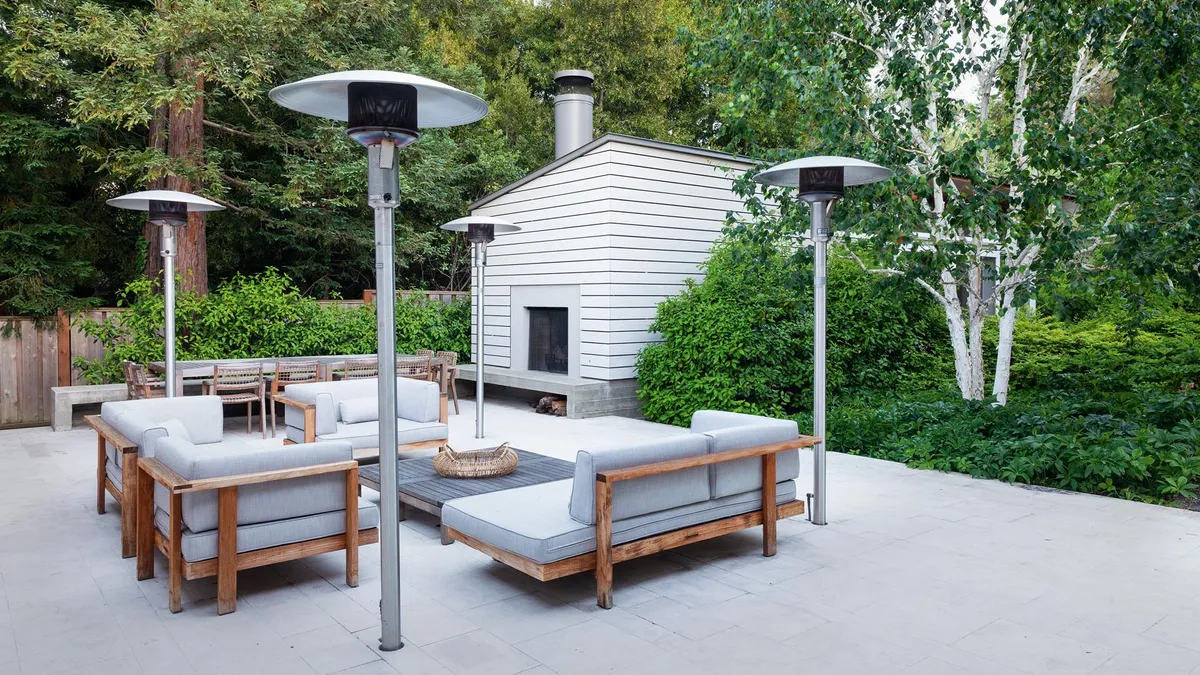Most current designers will claim an ecological component to their work, but Ron Lutsko can say with certitude that this has been a key aspect of his practice since he set up his San Francisco-based company in 1981, when such interests were viewed almost as cranky. What makes Ron’s work even more interesting is that he is steeped in the traditions of Californian garden modernism, as defined by early 20th-century figures such as Thomas Church and Garrett Eckbo. The result is that Ron’s design mingles a deep knowledge of native flora with an elegant modernity.
The garden in brief
What Surprise ‘oasis’ garden, designed by Ron Lutsko. Where California, USA. Size Half an acre. Soil Heavy clay. Climate Unpredictable winters. Hardiness zone USDA 9b.
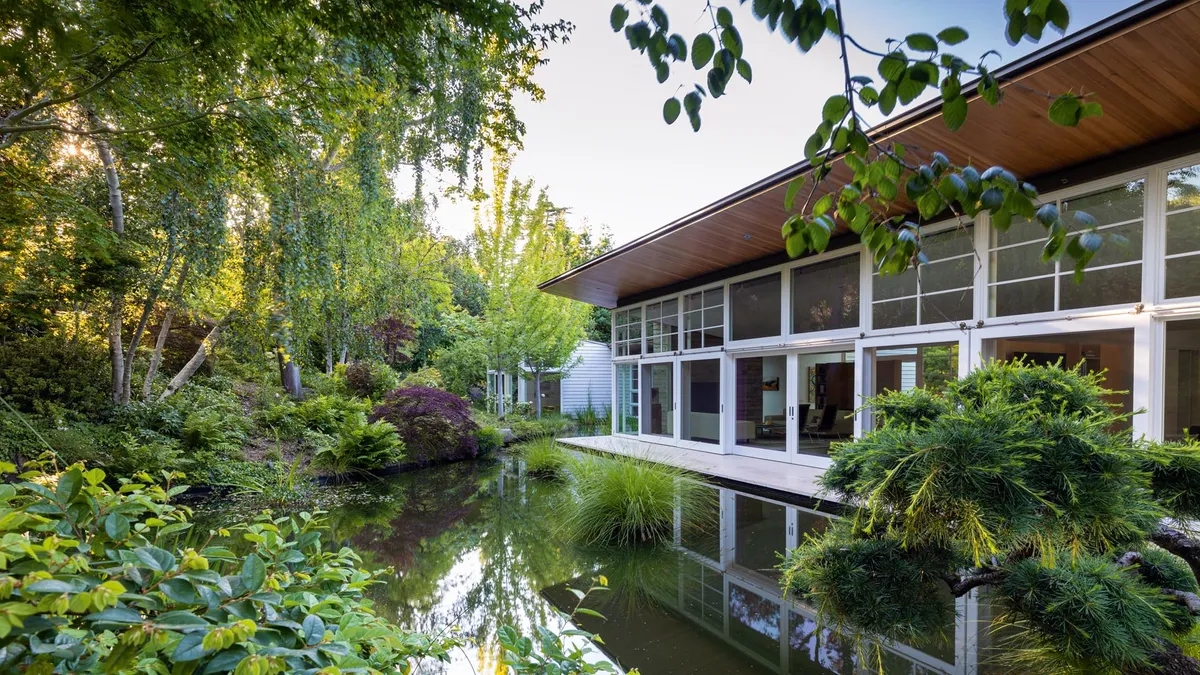
The property
In recent years Ron has been pushing at the boundaries of what might be considered ‘a garden’ – at projects such as the Portola Residence, where a plot without boundaries segues with the surrounding grassland. But his abiding interest in the possibilities of plants means he is also eager to take up new horticultural challenges, even if the results are somewhat out of kilter with the rest of his portfolio. This is certainly the case at a half-acre garden he has designed at a private residence in the affluent suburb of Atherton, 40 miles south of San Francisco. Here, he was asked to create a ‘temperate oasis’ pool garden around a remodelled 1960s glass-walled house.
“I want my work to grow out of the place, but this is different,” Ron says. “The front of the property feels airy, open and Mediterranean, but then you come through the house and you are in this temperate-climate oasis that does not even feel like California. There’s a moment of compression at the front door, then you go from dry gravel to wet pond in just a few paces. It’s as if in one building you travel from the South of France to Switzerland.”
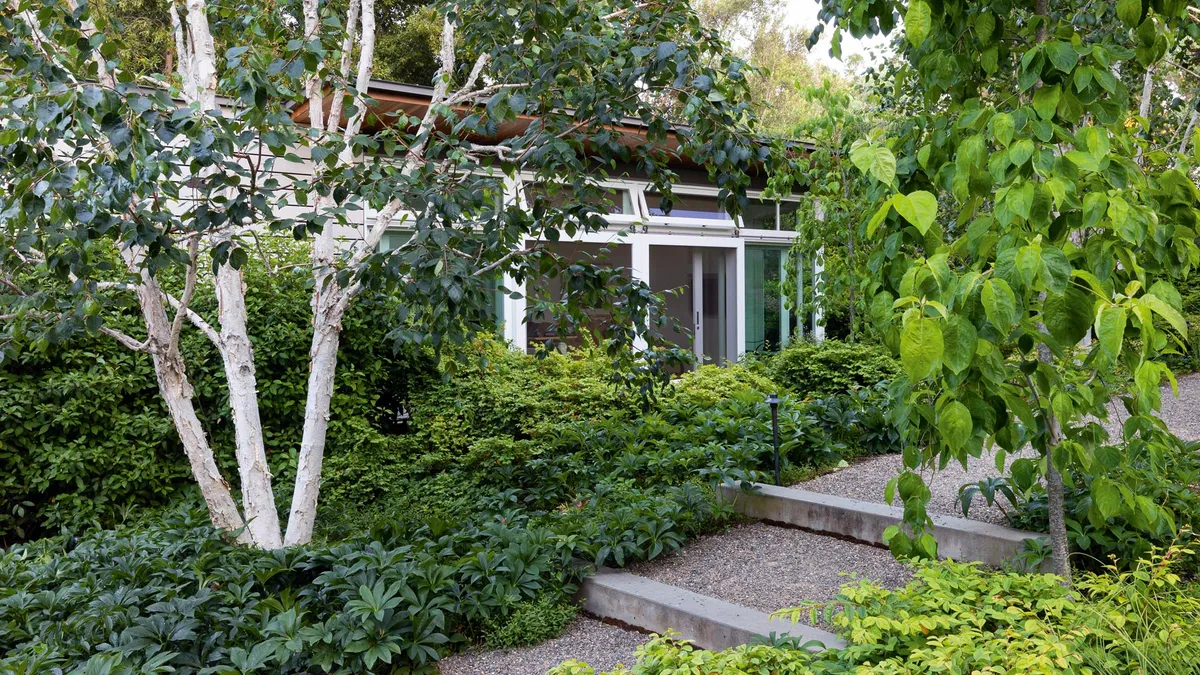
The concept
The concept stemmed in part from the clients’ desire to move their collection of Japanese maples and conifers from their previous garden to the new house. The existing building was remodelled by architectural firm Turnbull Griffin Haesloop, whose founder, the late William Turnbull, is celebrated for his rustic-modernist houses at Sea Ranch, Sonoma, and was a mentor to Ron as a young designer. Working closely with the architects, Ron hit upon a tripartite structure for the garden, which is a ‘flag lot’, in local real-estate jargon. This means that the long, straight entrance drive cuts through other properties, so that the garden sits in a secluded situation in woodland ‘behind’ the neighbouring houses. The three long rectangular sections are a dry-garden entrance court with a grove of white-blossomed chimonanthus trees, then the ‘oasis’ garden immediately behind the house, followed by another dry zone at the far end of the plot, slightly uphill.
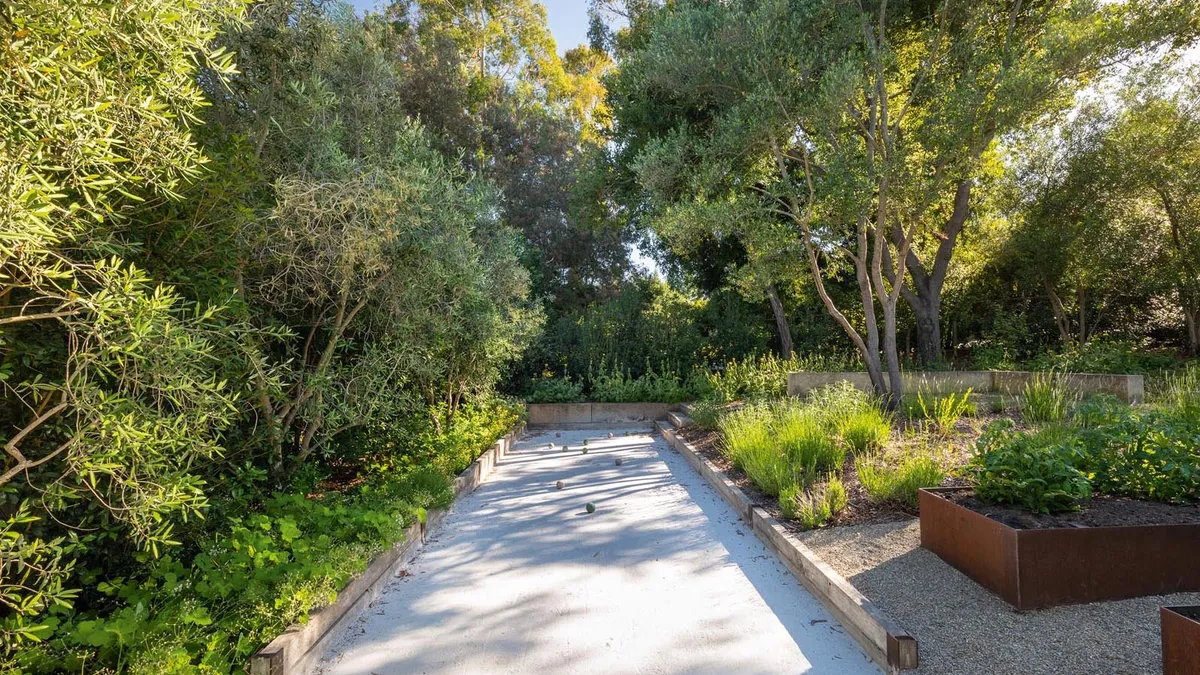
The garden
“It was an old established garden, but it had been pretty much abandoned,” Ron explains. “We expanded an existing small pond and brought water right up to the house and deck.” The pool was accented with native carex (sedge) and irises (both Japanese – I. ensata – and those from the ‘Louisiana’ species group). Ron acknowledges that elements such as the maples, rocks, viewing deck and horizontal orientation give the design something of a Japanese feel, but his intention was not to create a themed garden. “There are no specific Japanese motifs,” he says, “but I do love the way the Japanese link their buildings with their landscapes. The area by the pool is very much a self-centred, introspective space. We contoured the hill behind so it forms a bowl and you find yourself in this quiet zone.”As for the maples, says Ron, “they’re like little characters emerging from the woods”.
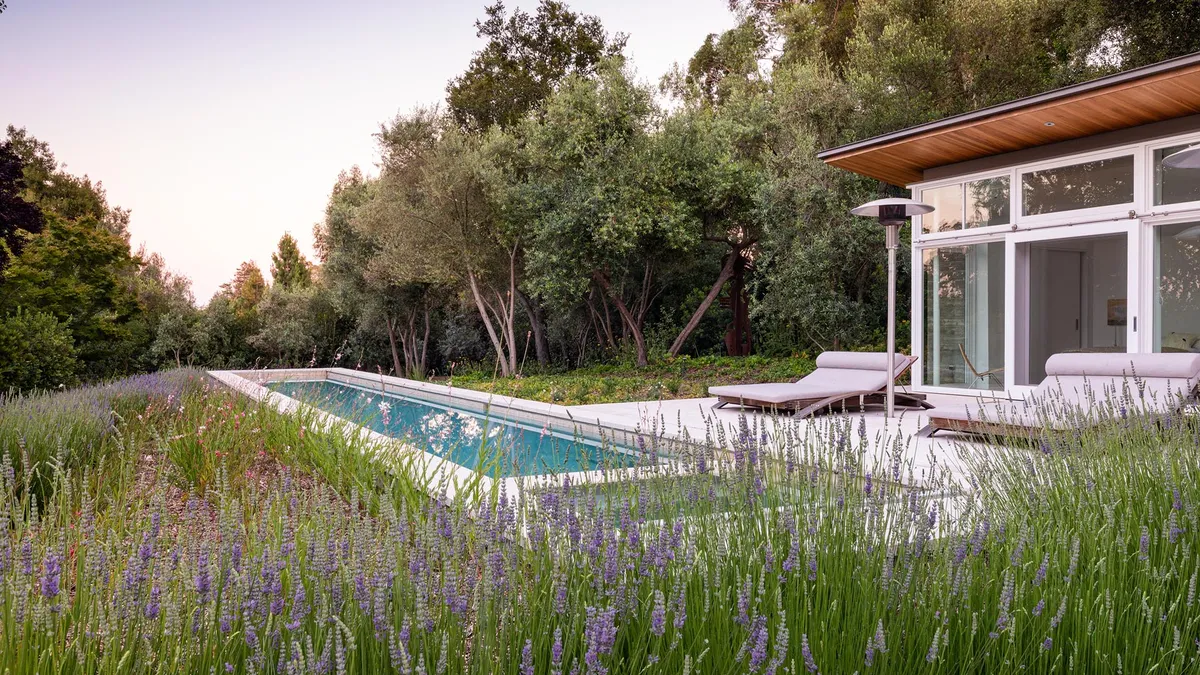
The planting
The planting for the ‘oasis’ area incorporated a verdant understorey of hellebores, cyclamen, anemones and ferns (mainly woodwardias and maidenhairs), with a shrub layer of dwarf maples, loropetalums, daphnes and smaller species rhododendrons. The upper level comprises birch, sugar maple and cornus (mainly C. kousa), with olives at the fringes, where the garden meets the surrounding woodland of eucalyptus and live oak. The two smaller garden areas, which sandwich the house and pool garden, are more typically Californian, and less distinctive as a result.
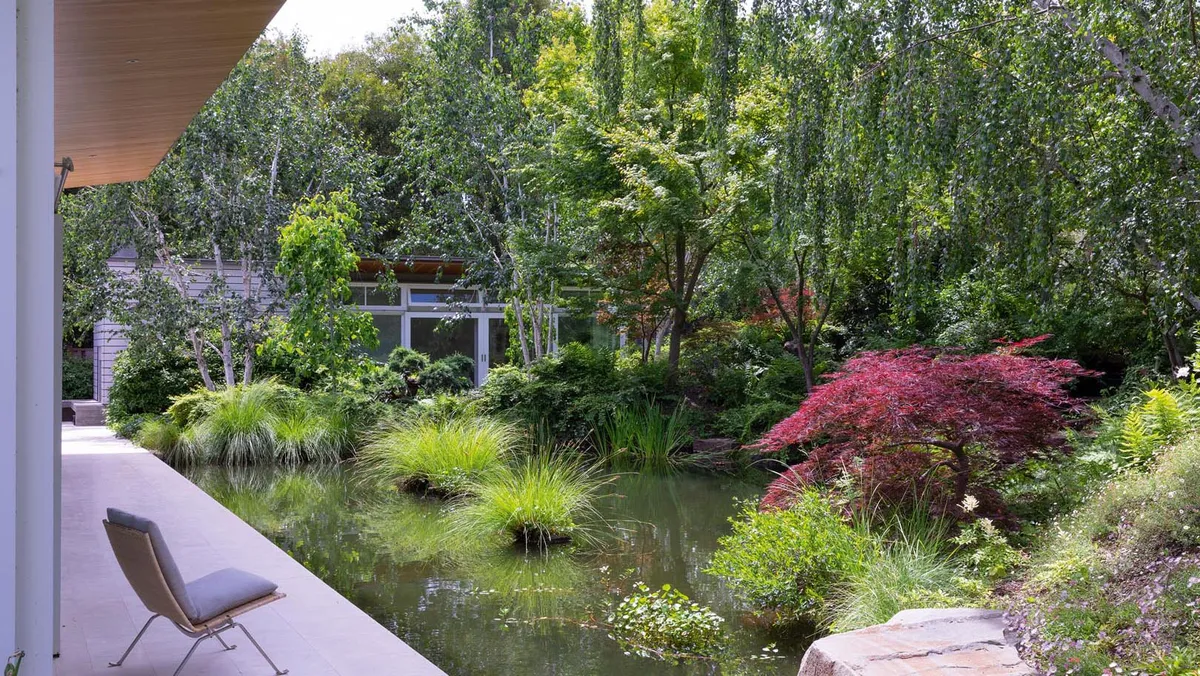
The result
What Ron clearly relished most was creating the anomalous water garden at the heart of the property. “It is a very different garden for us,” he acknowledges. “But in a certain way I love these plants. I just embrace the whole thing and step back. I wouldn’t have done it any differently.
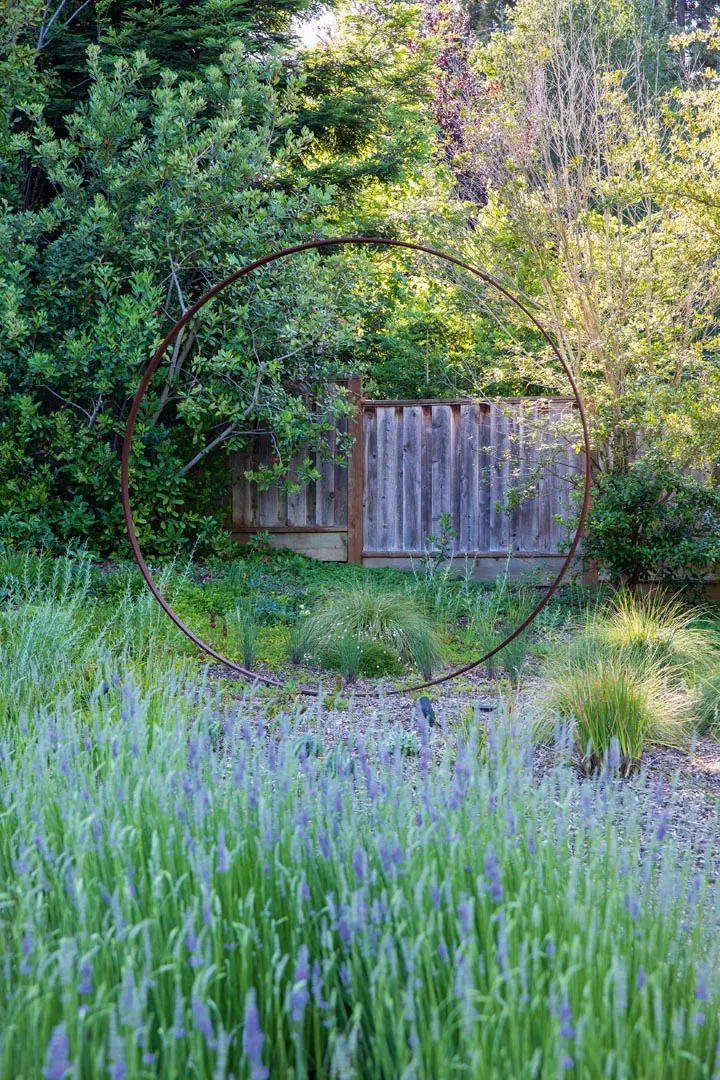
12 key plants to use
1
Acer palmatum
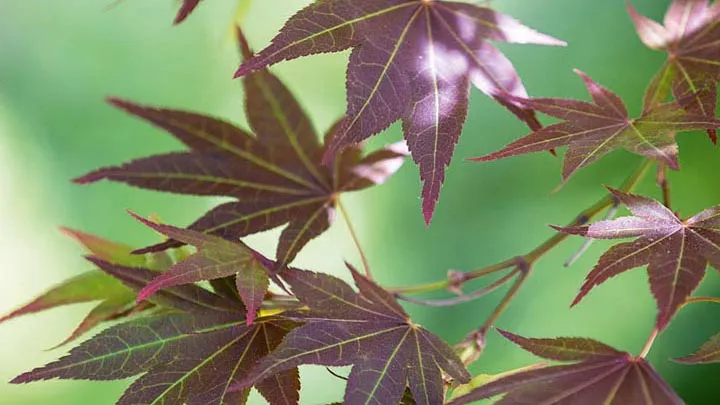
One of several Japanese maples that the clients brought with them from their existing collection, and which Ron has used to create focal points around the pool. 7m. RHS H6, USDA 5a-8b†.
2
Salvia leucantha
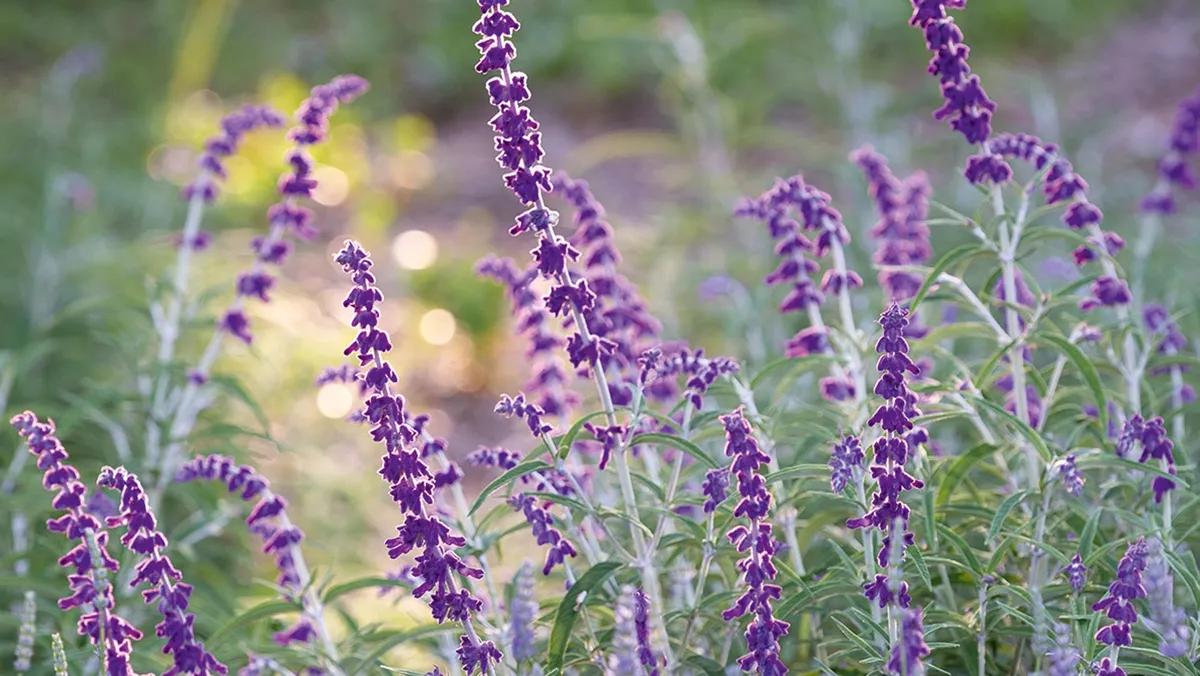
Mexican bush sage is used in the dry upper garden, favoured for its drought tolerance and long flowering season (into late autumn). The small white flowers have showy purple calyces. 1.2m. AGM*. RHS H2, USDA 8a-10b.
3
Philadelphus ‘Belle Étoile’
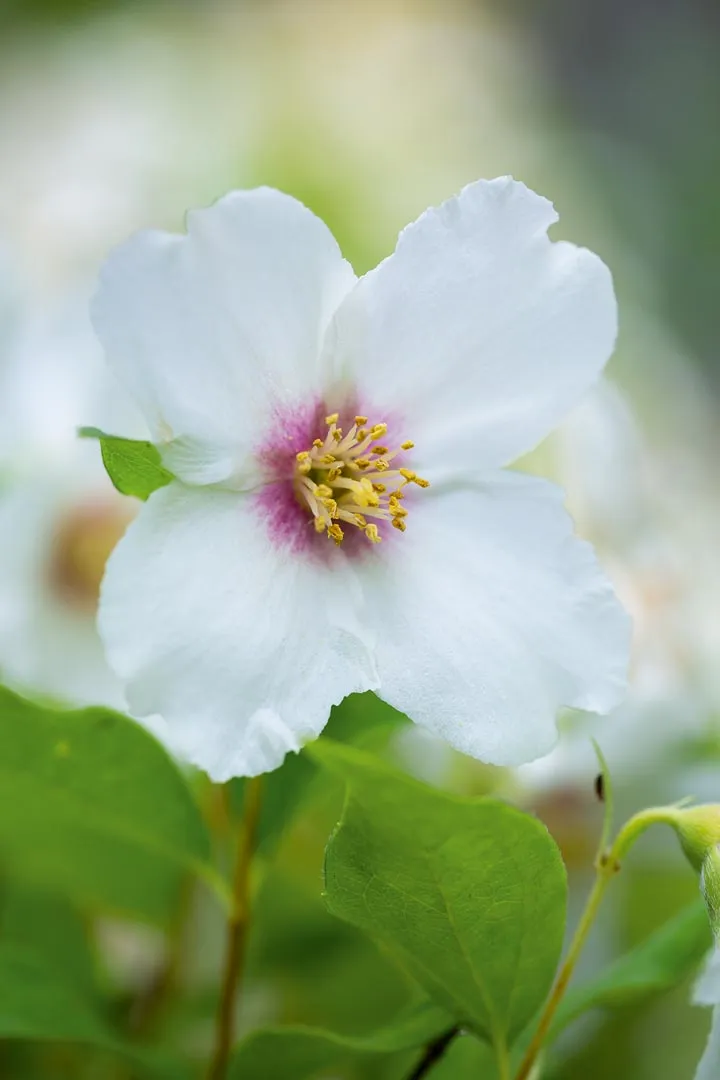
For Ron, this “remains the best philadelphus”, with its pink flower eye, strong fragrance and generous leafiness. 1.8m. AGM. RHS H6, USDA 5a-8b.
4
Cornus kousa ‘Akatsuki’
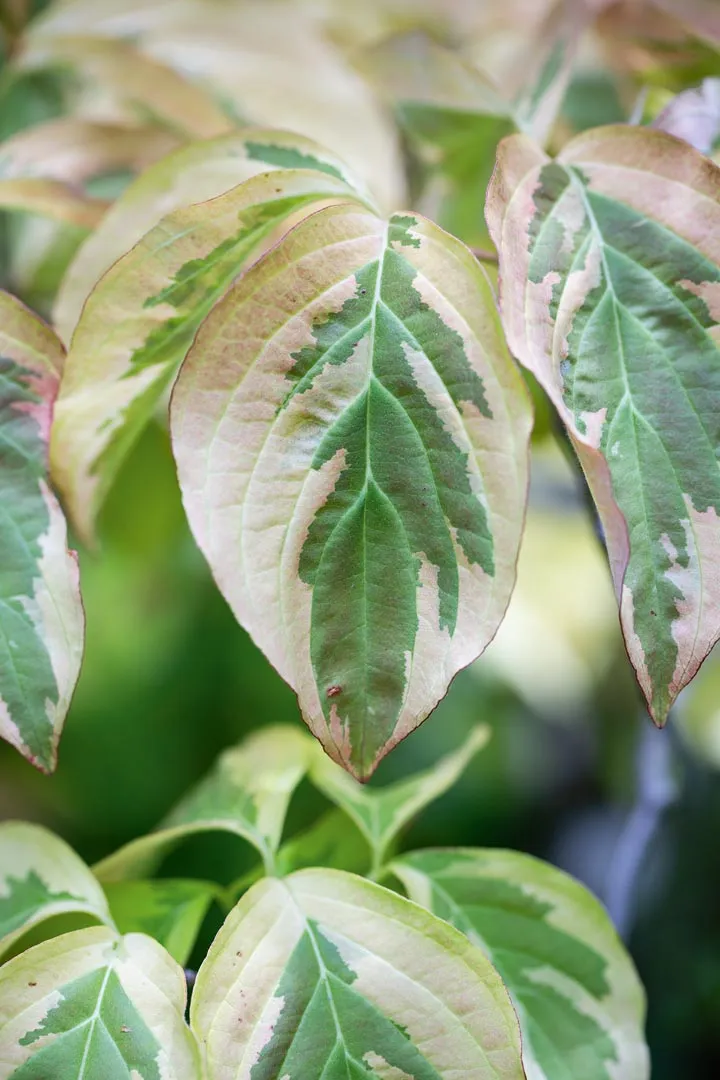
Though not generally a fan of variegated plants, Ron admits that this specimen from the clients’ collection adds character to the garden. It has showy bracts that start out white then turn pink with a white centre. 2.4m.
5
Adiantum capillus-veneris
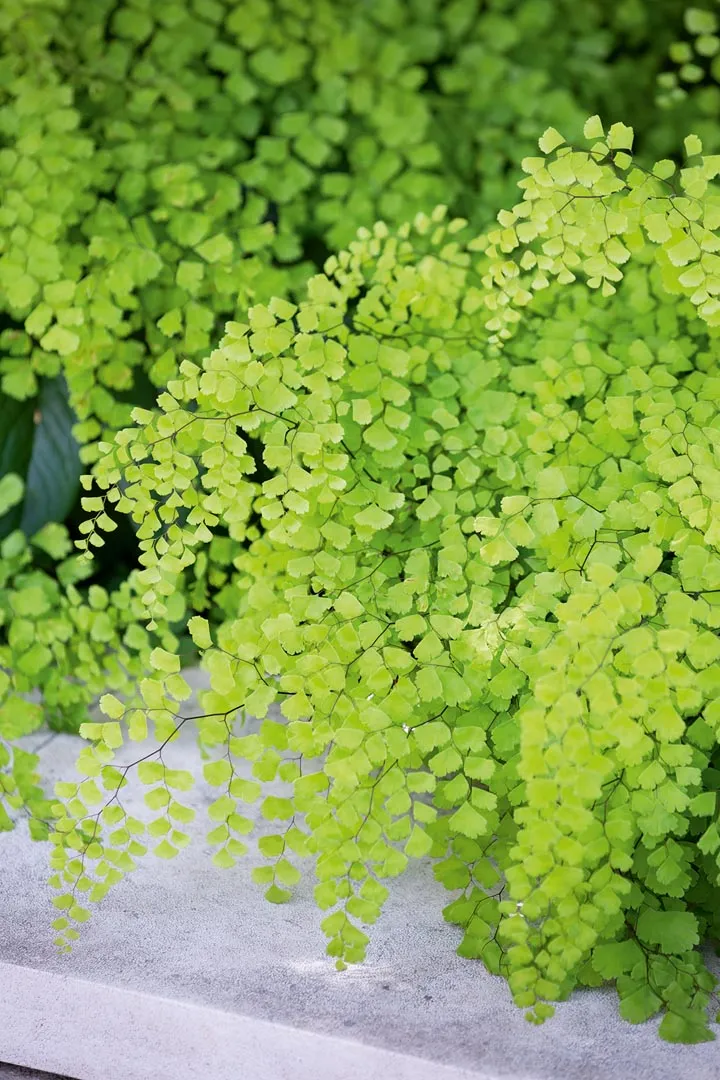
Deciduous clumping fern with a drooping habit. This marginal plant adds a delicacy at the edge of water. 45cm. USDA 5a-8b.
6
Lavandula x intermedia ‘Grosso’
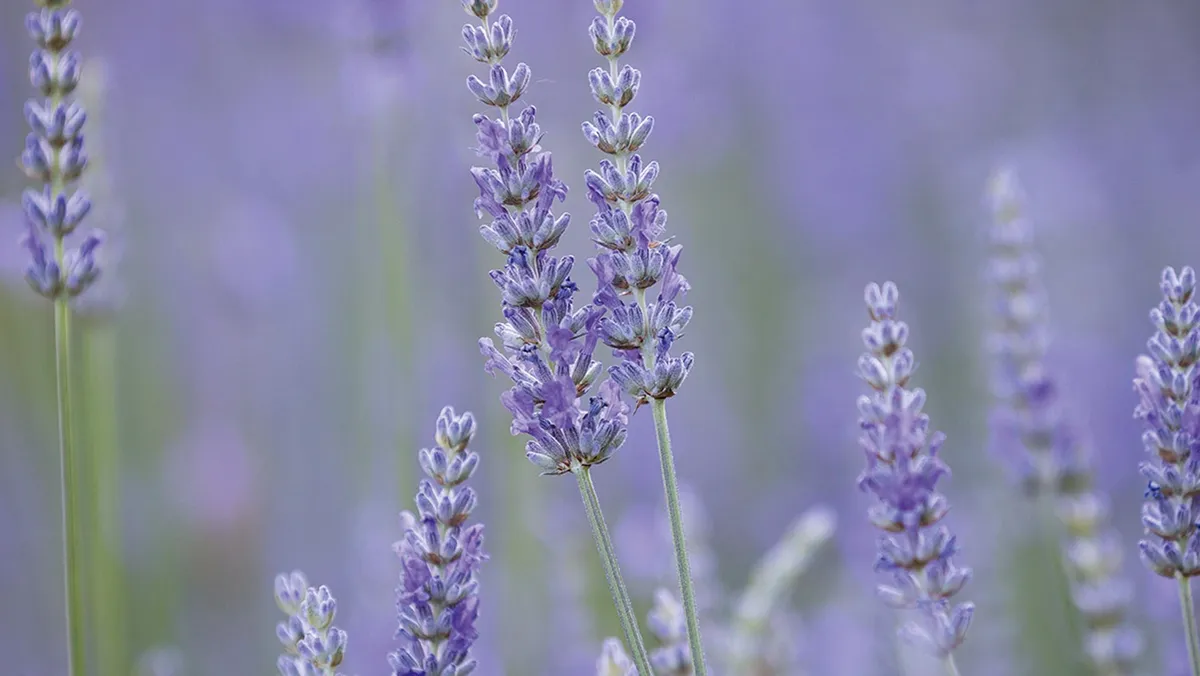
This highly aromatic lavender with deep bluish-purple flowers is used generously in the dry upper garden. 90cm. RHS H5, USDA 5a-8b.
7
Betula utilis var. jacquemontii
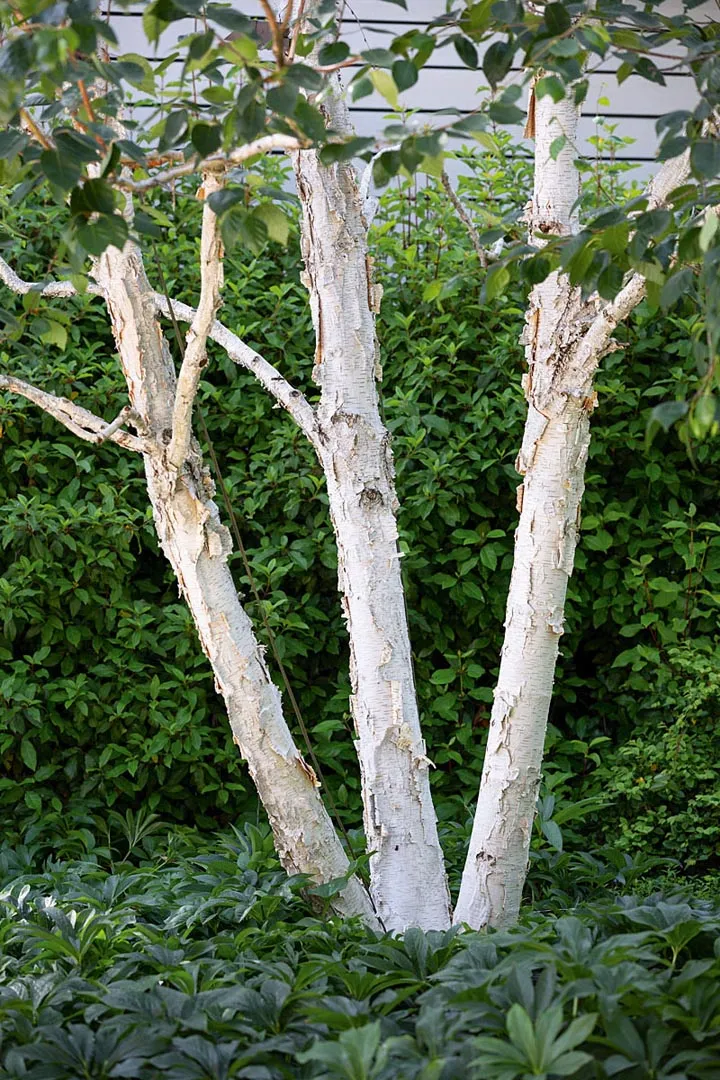
One of several birch species used in the garden in a deliberately anomalous manner (for California). The bark colour varies, but is usually the whitest found on any birch. 12m. USDA 5a-6b.
8
Cornus kousa
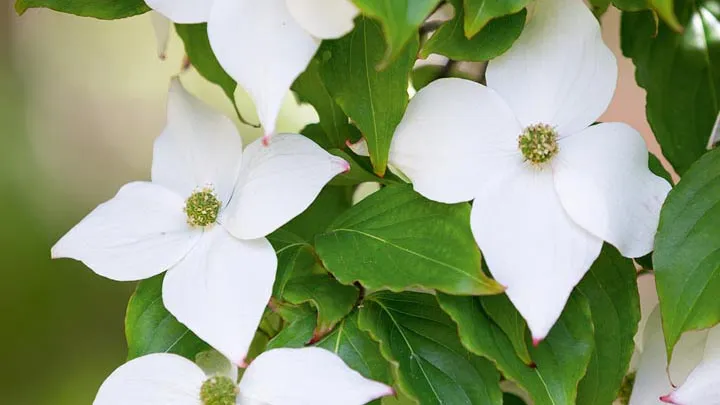
A bushy, unvariegated cornus used for its fresh, green-and-white appeal. The flowers are followed by deep-pink fruit clusters. 7m. RHS H6, USDA 5a-8b.
9
Darmera peltata
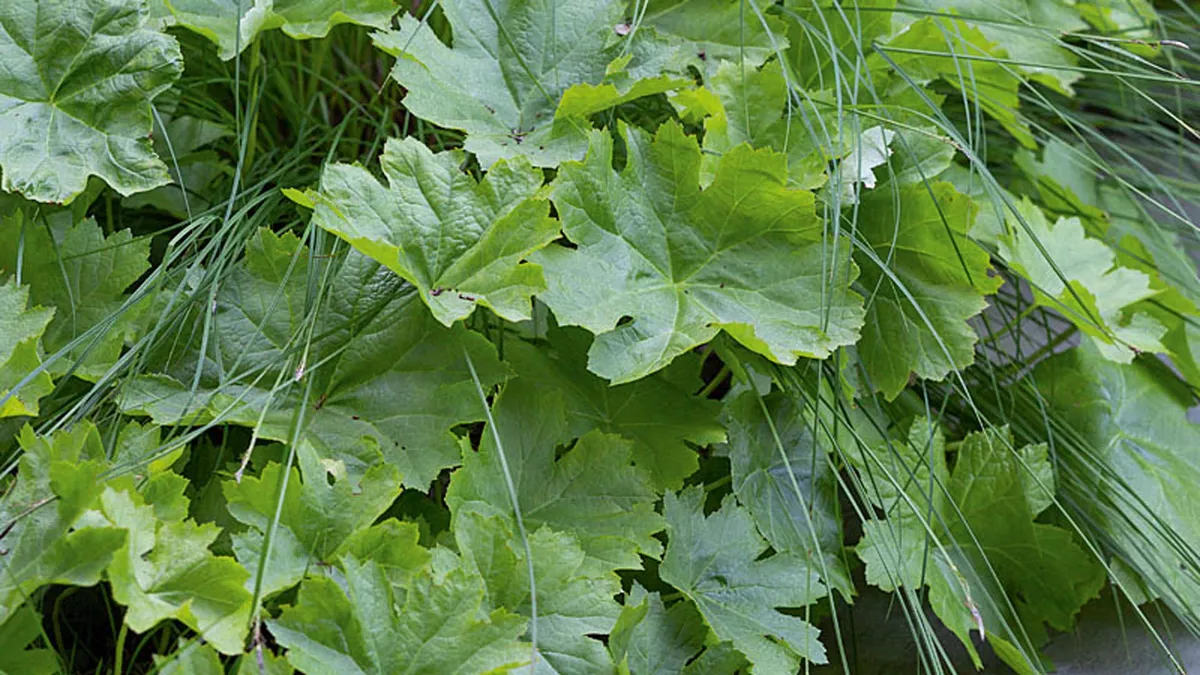
Its glossy, umberella-shaped leaves, around 50cm in width, turn red in autumn. Dies back below ground level in autumn, before new growth in spring, preceded by pale-pink flowers on tall, naked stems. 1.5m. AGM. RHS H6, USDA 5a-7b.
10
Curio talinoides var. mandraliscae
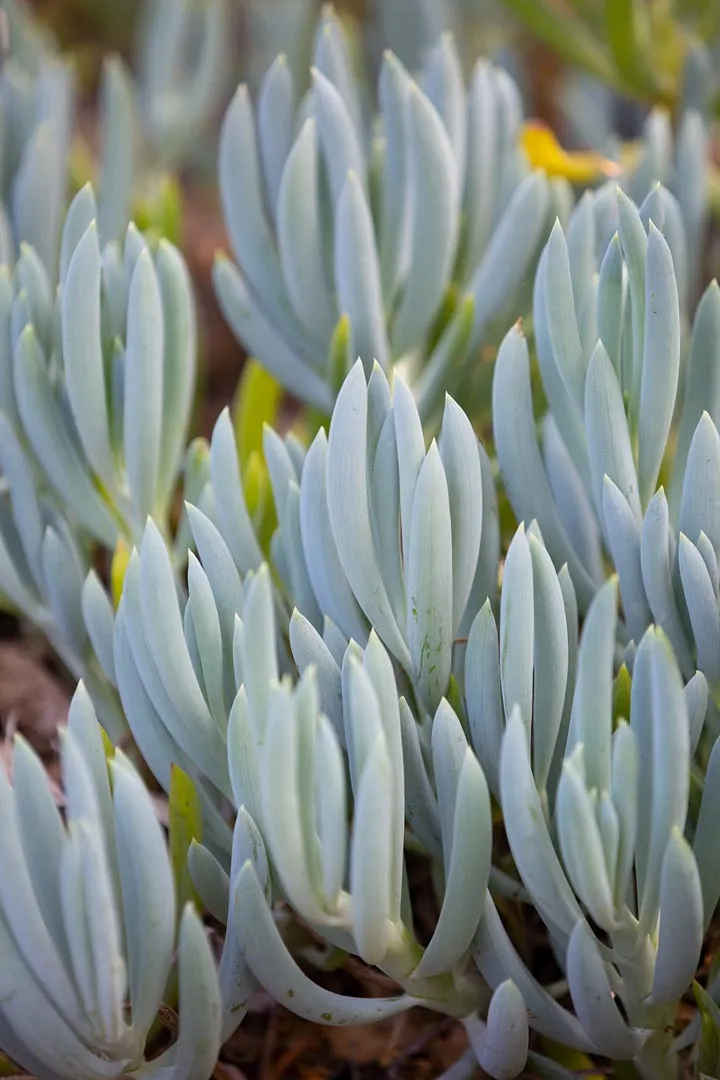
A small, succulent shrub is used in the front courtyard, its narrow, blue-green leaves turning myriad shades in the sunlight. 60cm.
11
Woodwardia fimbriata
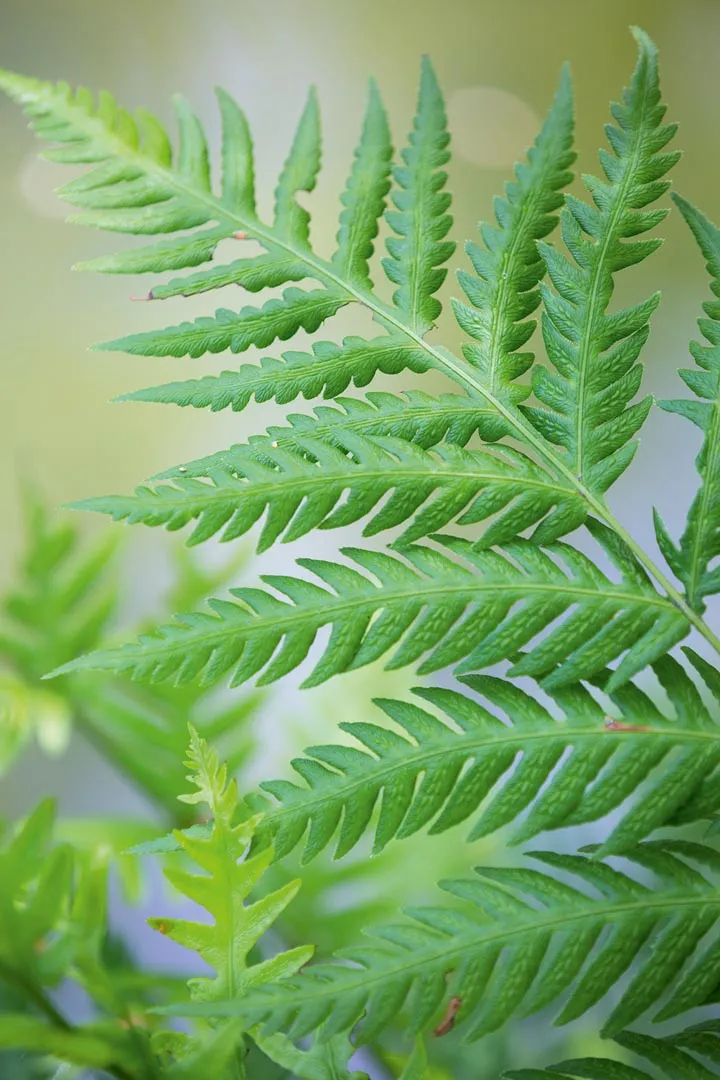
Native to California, this upright fern, with dark-green, lance-shaped fronds, is used extensively by the water in this garden. 1.5m. AGM. RHS H3.
12
Helleborus argutifolius
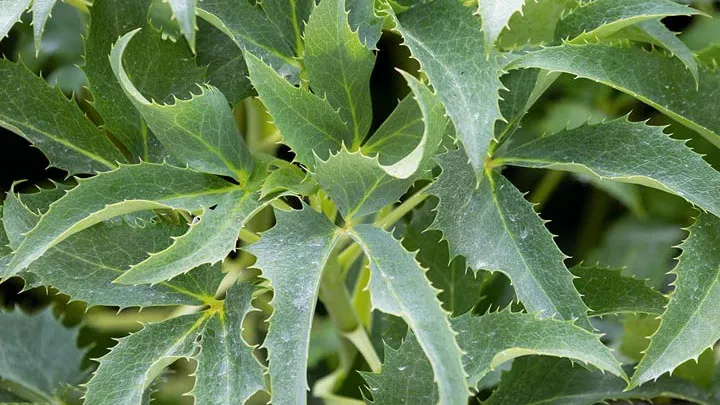
This hellebore can deal with both drought and wet shady conditions, so is an element of continuity between the oasis and the drier zones. Bears large, open clusters of nodding, pale-green flowers. 1m. AGM. RHS H5, USDA 6a-8b.
Useful Information
Find out more about Ron’s work at lutskoassociates.com
